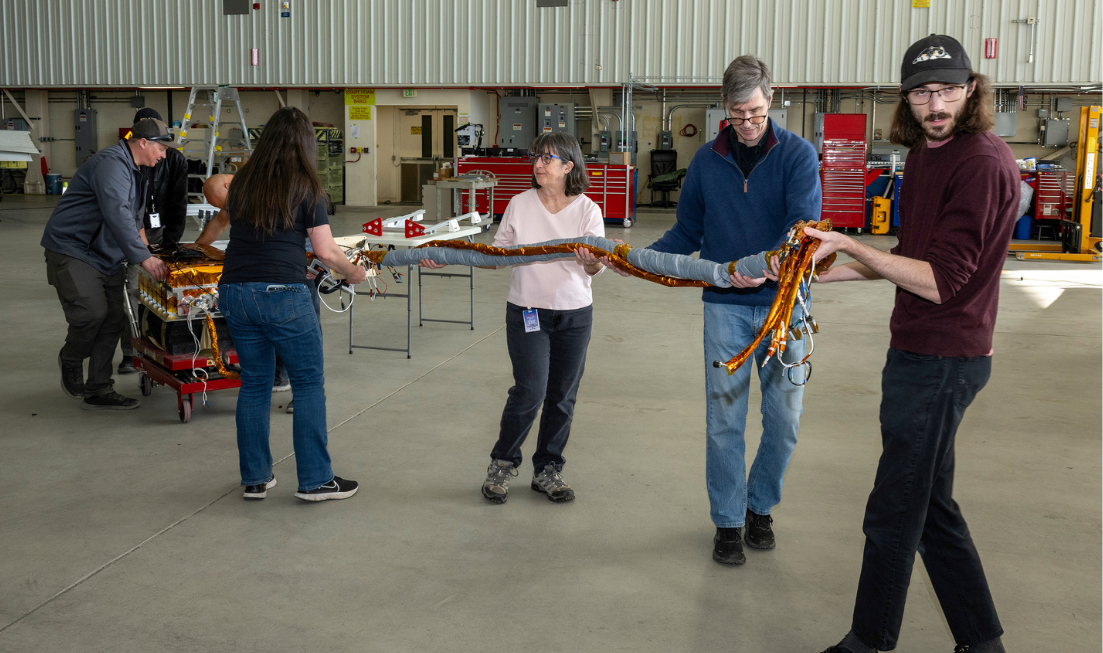HAAMR time: McMaster researchers’ NASA project soars to success

McMaster PhD student Alexander McCafferty-Leroux, far right, and colleagues at NASA'S air-LUSI project move the instrument across the hangar at NASA’s Armstrong Flight Research Center in California.
BY Keiko Kataoka, Faculty of Engineering
April 16, 2025
It was the HAAMR (High-Altitude Aircraft Mounted Robotic) telescopic mount’s time to shine at NASA’s Armstrong Flight Research Centre in California, where the air-LUSI mission launched under the late-March moonlight.
Developed by a team in the Intelligent and Cognitive Engineering (ICE) laboratory from McMaster’s Faculty of Engineering, the HAAMR — a nod to Hamilton — played a crucial role in gathering high-accuracy measurements to improve the precision of Earth-observing satellites.
Using the Moon as a calibration tool, the HAAMR provides stability to the air-LUSI (Airborne Lunar Spectral Irradiance) instrument on NASA’s high-altitude ER-2 aircraft. At an elevation of 70,000 feet, HAAMR protects it from atmospheric turbulence that would interfere with precision measurements.
Air-LUSI’s lunar measurements obtained on the mission are the most accurate ever made, said NASA program scientist Kelsey Bisson, advancing an understanding of Earth and weather patterns, and offering a new way to calibrate satellites while potentially reducing costs.
For highly accurate measurements, the angle of tracking error must not exceed half a degree, explains Andrew Gadsden, associate professor in the Faculty of Engineering.
“For all our flights this campaign, the error stayed below this threshold, and on average, we met the target by a factor of 20,” Gadsden says.
“It was a successful showing of the HAAMR and the air-LUSI mission to get the telemetric data we’ve been working toward for many years.”
The air-LUSI project is a collaboration between NASA, McMaster University, the U.S. Geological Survey and the University of Maryland Baltimore County, aiming to reduce the error in the existing lunar calibration model from 5 per cent to 1 per cent.
McMaster Mechanical Engineering PhD candidate Alex McCafferty-Leroux was on site in California for the HAAMR’s scientific flight.
“Overall, the team was happy to validate the system’s resilience to weather past its rating and the effectiveness of McMaster’s instrument,” says McCafferty-Leroux. “Improving the calibration of Earth-observing satellites has many implications for the betterment of society.
“Working on air-LUSI has been truly inspiring, reminding me time and time again that hard work always pays off.”


